Kaitseministri 2024. aasta ettekanne riigi pikaajalise arengustrateegia "Eesti 2035" elluviimisest
Istung: XV Riigikogu, IV istungjärk, täiskogu istung
Kuupäev: 2024-09-11 17:20
Osalevad Poliitikud:
Sõnavõtte kokku: 137
Koosseis: 15
Päevakorra kestus: 2h 34m
AI kokkuvõtted: 137/137 Sõnavõtud (100.0%)
Analysis: Structured Analysis
Poliitikute Kõneaeg
Poliitikud
Analüüs
Kokkuvõte
Esimesel päevakorrapunkti moodustas kaitseministri 2024. aasta ettekanne riigi pikaajalise arengustrateegia "Eesti 2035" elluviimisest. Kaitseminister Hanno Pevkur esitas põhjaliku ülevaate riigikaitse arengutest, rõhutades kolme sambast lähenemist: kaitsetahet, kaitsevõimet ja kaitsekoostööd. Ta tõi välja, et Eesti ei kavatse loorberitel puhata: kaitsevõime on viimastel aastatel oluliselt suurenenud ning riigi julgeoleku tagamiseks on oluline nii sõjaline valmisolek kui ka laiapind riigikaitse – sealhulgas tsiviilkaitse ja kriisivalmiduse – arendamine. Eelkõige rõhutati NATO ja liitlaste rolli, regionaalseid kaitseplaane ning Eesti kaitsekoostöö sügavnemist USA ja Ühendkuningriigiga, kuid ka Rootsi ja Soome osalust ning Ukraina abi jätkamist. Samas puudutati riigieelarvet, laskemoona varude täiendamist, varustuspõimu ja kohalike elanike valmisoleku kasvamist, sealhulgas kaitsetööstuse arendamist ning kohalikke investeeringuid.
Teises osas tõstatati arutelu Venemaa agressiooni kontekstis, Euroopa Liidu ja NATO rollid, ning rõhutati vajadust suurendada riigikaitse finantseerimist ja koostööd, et tagada Eesti turvalisus ning kindlustunne riigi tulevikus. Kokkulepete ja investeeringute tähendus lisandusid, kuid otsuste vorm tienti ning lõplik kooskõlastus jäid laialdaselt õiguslikult ja poliitiliselt arutamiseks – läbirääkimised suleti pärast istungit, otsuseid ei tehta kohe.
Tehtud otsused 1
Ei võetud lõplikke otsuseid; päevakorrapunkt suleti läbirääkimistega.
Aktiivseimkõneleja
Kõige aktiivsem esineja oli Urmas Reinsalu (Isamaa fraktsioon), kes esindas opositsiooni ning jagas tähelepanuvõimsat kriitikat ja konkreetsed ettepanekud riigikaitse rahastuse ja moonavarude tarne küsimustes. Tema positsioonina võib teda liigitada parempoolsesse/parempoolselt-joonesse poliitilisse plokki (right). Ta tõstatas kriitilisi küsimusi ja esitas konkreetseid parandusettepanekuid seoses rahastuse, allikate ja konsensuse loomisega riigikaitse arendamisel.
Aseesimees Toomas Kivimägi
AI kokkuvõte
Toomas Kivimägi tutvustab kolmandat päevakorrapunkti ja teatab, et käsitletakse kaitseministri 2024. aasta ettekanne riigi pikaajalise arengustrateegia „Eesti 2035” elluviimisest, millele järgneb kuni 20-minutiline ettekanne, iga Riigikogu liige võib esitada ühe küsimuse ning seejärel avatud fraktsioonide läbirääkimised.
Kaitseminister Hanno Pevkur
AI kokkuvõte
Ettekanne rõhutab, et Eesti tugevdab riigikaitset nii sisemiselt kui väliselt: suurendab kaitsevõimet, ajateenijate ja reservväelaste arvu ning tugevdab NATO-liitlasuhteid, jätkab Ukrainale abi ning usub, et Ukraina võit on Eesti võit, sest vaid vaba Eesti kindlustab rahva turvalisuse.
Aseesimees Toomas Kivimägi
AI kokkuvõte
Aseesimees Toomas Kivimägi tänas ministeri, märkis, et talle on terve rida küsimusi, ning palus Kersti Sarapuu esitada küsimused.

Kersti Sarapuu
Profiileerimine Fraktsiooni mittekuuluvad Riigikogu liikmedAI kokkuvõte
Kersti Sarapuu tänab juhataja ja ministrit ning küsib ETV-s öeldud laskemoona hinnalangetuse kohta, kui odavamaks see võiks minna, kui palju rohkem laskemoona sellega saada võiks ning kui suured oleksid mahud ja tarneajad.
Kaitseminister Hanno Pevkur
AI kokkuvõte
Kaitseminister Hanno Pevkur ütles, et Eesti ajab taga mõju, mitte arvu, järgides rahvusvahelist doktriini, mille kohaselt tuleb vastane purustada umbes 70%, et ta kaoks võitlusvõimest, kuid kuna laskemoona turg on ebakindel ja hinnad kõikuvad, otsitakse Ukrainast saadud kogemuste põhjal odavamaid alternatiive ning koostööd, et maksumaksja raha säästa, samas arutatakse, kas kriitilised vajadused on täidetud ja kas rahastust on vaja suurendada, sest kuigi 2022–2028 on plaanitud ligikaudu 3 miljardit eurot, tuleb laskemoona soetamist jätkata ka pärast 2028, kuna tarneajad ja hinnad muutuvad päevade kaupa, ning eesmärk on leida vastus, kuidas tõesti efekti saavutada.
Aseesimees Toomas Kivimägi
AI kokkuvõte
Aseesimees Toomas Kivimägi palus Urve Tiidust tulla esinema.

Urve Tiidus
Profiileerimine Eesti Reformierakonna fraktsioonAI kokkuvõte
Ta tõi välja NATO liikmesriikide kaitsekulude osakaalu SKP-s, näidates, et enamik ületab 2%, kuid on riike, sealhulgas Belgia, Itaalia ja Hispaania, kes jäävad allapoole, ning küsis nende lähiajalise piiri ületamise tõenäosust.
Kaitseminister Hanno Pevkur
AI kokkuvõte
Kaitseminister Hanno Pevkur ütles, et NATO tervikuna on kaitsekulutuste osakaal juba üle 2%, 22–23 riiki ületavad 2% (USA, Poola, Eesti, Läti ja Leedu üle 3%), Luksemburg on erand ning täpne aeg, millal kõik 2%-ni jõuavad, on ebakindel — mõni prognoos näitab 2027–2029, teised 2030.
Aseesimees Toomas Kivimägi
AI kokkuvõte
Alar Lanemanile palutakse lavale tulla.
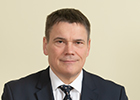
Alar Laneman
Profiileerimine Fraktsiooni mittekuuluvad Riigikogu liikmedAI kokkuvõte
Ettekande põhjal jätkab kava erakorraliste rahasüstide järel algatatud joont, sidudes riigikaitse tänapäeva ja tulevikuvajadustega ning rõhutades õhukaitse ning liitlassuhete olulist rolli, ning kuigi meedias kõlavad arutelud moonahankest, vastab kava ka sellele küsimusele ning selgitab NATO rolli ja vähendab kahtlusi.
Kaitseminister Hanno Pevkur
AI kokkuvõte
Kaitseminister Hanno Pevkur ütles, et tõeline kaitsevõime sünnib väe- ja võime loomest, mitte ainult riigikaitsekulutuste suurendamisest, ning Eesti on NATO seas eeskujuks, suunates üle 50% oma kaitsekulutustest just võime arendamisse, samal ajal rõhutades liitlaste ühist vajadust regionaalsete kaitseplaanide rakendamiseks.
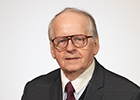
Enn Eesmaa
Profiileerimine Fraktsiooni mittekuuluvad Riigikogu liikmedAI kokkuvõte
Enn Eesmaa märkis, et Island ei kuulu Euroopa Liitu, kuid on NATO asutajaliige ning tal puudub oma armee, kuid rahuindeksis on Island esikohal ja islandlased on teinud ettepaneku kaaluda põhjala armee loomist, küsides seejärel, kas minister on sellistest teemadest tasandil kunagi rääkinud ning viidates Taani kolleegi Poulsenile.
Aseesimees Toomas Kivimägi
AI kokkuvõte
Aseesimees Toomas Kivimägi palus Enn Eesmaa esinema.
Kaitseminister Hanno Pevkur
AI kokkuvõte
Riigikaitseminister Hanno Pevkur ütles, et Island on väike, kuid oluline liitlane ning nende panus Ukrainasse on märkimisväärne, rõhutas regionaalse koostöö tähtsust JEF-formaadis, mis võimaldab kiiret abi ilma Brüsselisse kogunemata, ja kinnitas, et keskendutakse NATO tugevusele ning olemasolevatele formaatidele, vältides eraldi Euroopa Liidu või põhjala armee loomist, et vältida segadust.
Aseesimees Toomas Kivimägi
AI kokkuvõte
Kõnes palutakse Margit Sutropit.

Margit Sutrop
Profiileerimine Eesti Reformierakonna fraktsioonAI kokkuvõte
Margit Sutrop tänab eesistujat ja ministrit ning rõhutab, et Eesti tegeleb kaitsevõime arendamisega ning Ukrainat aidates tuleb kasutada ka Eesti kaitsetööstuse toodangut, ning küsib, kui tugev on Eesti kaitsetööstus, kui palju valitsus selle arendusse panustab ning kui palju on selles kaasatud Eesti teadusasutused ja teadusmahukad ettevõtted ning kas nähakse suuremaid koostöövõimalusi, sealhulgas humanitaar- ja sotsiaalteaduste panuse osas.
Kaitseminister Hanno Pevkur
AI kokkuvõte
Ettekanne kinnitas, et Eesti kaitsetööstus on viimastel aastatel tugevalt kasvanud ning eesmärk on kasvatada seda veel kaks korda ja jõuda ligikaudu miljardi käibeni järgmise kahe–kolme aasta jooksul, kasutades duaalkasutusega ettevõtteid, kohalikke allhankeid ja teadus- ning arendustegevust (koos Kaitseväe Akadeemia ja rakendusuuringute keskusega), tihedat koostööd Prantsusmaa kaitsetööstusega ning Ukraina abi kanaliseerimist Eesti ettevõtete kaudu ning ülikoolide panust.
Aseesimees Toomas Kivimägi
AI kokkuvõte
Aseesimees Toomas Kivimägi kutsus Vadim Belobrovtsevi rääkima.
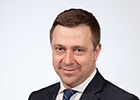
Vadim Belobrovtsev
Profiileerimine Eesti Keskerakonna fraktsioonAI kokkuvõte
Belobrovtsev rõhutas, et strateegia peaks keskenduma tsiviilkaitsele ning inimeste kaitsetahte ja teadlikkuse suurendamisele, ning küsis ministrilt, kas eestimaalased on kriisiolukorras teadlikud ja kuidas seda teadlikkust tõsta.
Kaitseminister Hanno Pevkur
AI kokkuvõte
Kaitseminister Hanno Pevkur tõi välja, et teadlikkus riigikaitse teemadest kasvab, koolitused parandavad arusaamu, riigikaitseõpetuse kohustuslikkus koolides ja uue õpiku valmimine koos lisaraha suunamisega laiapindse kaitse edendamiseks näitavad, et riik ei saa kunagi valmis ja peab pidevalt tegutsema.
Aseesimees Toomas Kivimägi
AI kokkuvõte
Aseesimees Toomas Kivimägi palus Peeter Tali esinema.
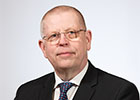
Peeter Tali
Profiileerimine Fraktsiooni mittekuuluvad Riigikogu liikmedAI kokkuvõte
Peeter Tali rõhutas, et Eesti suurendab targalt kaitsekulutusi ja õpib Ukrainast, et sõda käib kuues lahinguruumis (maa, meri, õhk, kosmos, küber- ja inforuum), ning et rahva arvamuse järgi on suurimad ohud valeuudised, küberrünnakud ja välisriigi sekkumine, ning ta küsib, mida nende hirmude ja ohtudega teha.
Aseesimees Toomas Kivimägi
AI kokkuvõte
Aseesimees Toomas Kivimägi tänab head kolleegi.

Peeter Tali
Profiileerimine Fraktsiooni mittekuuluvad Riigikogu liikmedAI kokkuvõte
Rõhutatakse, et te olete ikka kaitseminister.
Kaitseminister Hanno Pevkur
AI kokkuvõte
Kaitseminister Hanno Pevkur rõhutas, et desinformatsiooni vastu on parim vahend avatus ja adekvaatne teave ning hübriidrünnete korral tuleb avalikkust teavitada, kuigi mõni teave peab jääma punase templi alla.
Aseesimees Toomas Kivimägi
AI kokkuvõte
Toomas Kivimägi kutsub Anti Allast rääkima.

Anti Allas
Profiileerimine Fraktsiooni mittekuuluvad Riigikogu liikmedAI kokkuvõte
Anti Allas tänab koostöö eest kohalike elanikega Nursipalu harjutusvälja arendamisel, toob välja, et avalike uuringute tulemuste esitamisel on puudujäägid (nt tulemused ei ole loetavad ja kaovad kodulehelt) ning küsib, mida saaks teha koostöö paremaks muutmiseks.
Kaitseminister Hanno Pevkur
AI kokkuvõte
Kaitseminister Hanno Pevkur ütles, et Nursipalu on vajalik ning kui avalikud uuringud näitavad mõjusid, tuleb neid vähendada; maadeostude korral eelistatakse esmalt ala sees olevaid kinnistuid ja lähinaabreid ning piirid kohandatakse vastavalt, ning kohalikega hea koostöö jätkub, ollakse avatud.
Aseesimees Toomas Kivimägi
AI kokkuvõte
Aseesimees Toomas Kivimägi palub, et Tõnis Lukas võtaks sõna.

Tõnis Lukas
Profiileerimine Isamaa fraktsioonAI kokkuvõte
See kõne meenutab 1944. aasta sündmusi, kui Punaarmee lähenes ja Eesti rahvuslik liikumine mobilisatsiooniga ning piirivalverühmad võitlesid, mille tulemusena moodustati Otto Tiefi valitsus, sinimustvalge lipp heisati ning kümnetele tuhandetele anti võimalus põgeneda punaterrori eest — ning küsitakse, kuidas Kaitseministeerium väärtustab tänapäeval nende vabaduse eest võidelnute mälestust.
Kaitseminister Hanno Pevkur
AI kokkuvõte
Kaitseminister Hanno Pevkur ütles, et Eesti valitsus koguneb iga viie aasta tagant Põgari-Sassi külas sümboolsesse istungisse Otto Tiefi teod ja vabadusvõitlejate mälestuseks ning praegu ei ole selle teemaga seotud täiendavaid eriüritusi planeeritud.
Aseesimees Toomas Kivimägi
AI kokkuvõte
Kõnes palutakse lavale Meelis Kiili.
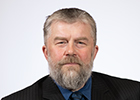
Meelis Kiili
Profiileerimine Fraktsiooni mittekuuluvad Riigikogu liikmedAI kokkuvõte
Meelis Kiili rõhutab Eestis pikaajaliste liitlaste lepingute olulisust, märkides, et Poola, Leedu ja Soome keskenduvad liitlaste kohaloleku pikaajalisusele koos peredega ja nende integreerimisele regionaalsesse majandusse ning ellu, ning küsib, kas meil on sarnane ambitsioon liitlasi kauemaks jääda ja olla rohkem integreeritud meie ühiskonda.
Kaitseminister Hanno Pevkur
AI kokkuvõte
Ettekanne kinnitas, et Eestis keskendutakse oma kaitsevõime arendamisele ning hetkel ei plaani püsivat tervet brigaadi, vaid liitlaste kohalolu ja pataljonide kaudu umbes 2000 liitlast iga päev, ning kunagi võiks kaaluda püsiva brigaadi kohalolu alles siis, kui oma vajadused on täidetud; Poolas juhitakse USA korpust, Leedus tuleb sakslaste brigaad, Soomes otsust püsiva brigaadi kasuks ei tehtud ja Eestis on määratud Briti brigaad koos 1. ja 2. brigaadiga ning ameeriklaste pataljoniga.
Aseesimees Toomas Kivimägi
AI kokkuvõte
Aseesimees Toomas Kivimägi kutsus Mati Raidma kõnelema.
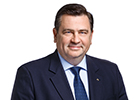
Mati Raidma
Profiileerimine Eesti Reformierakonna fraktsioonAI kokkuvõte
Mati Raidma võtab kõnes kokku riigikaitse rahastamise teema, rõhutab vajaduste ja võimaluste vahelise lõhe teadvustamist ning küsib, kui kaugel me oleme ühispanustamise kaasamise võimalustest, keskendudes eelkõige Euroopa Liidule ja selle finantsvahenditele.
Kaitseminister Hanno Pevkur
AI kokkuvõte
Kaitseminister Hanno Pevkur rõhutab, et kaitsekoostöö peab jääma NATO raames keskseks, kuid Euroopa Liit võiks ühise rahastuse kaudu katta kriitilisi vajadusi nagu laskemoon, õhukaitse ja piirivalve ning arendada kaitsetööstust, toetades Ursula von der Leyeni 500 miljardi euro suurust kava, millest umbes 100 miljardit suunataks nende kriitiliste vajaduste rahuldamiseks.
Aseesimees Toomas Kivimägi
AI kokkuvõte
Aseesimees Toomas Kivimägi kutsub Priit Sibulit esinema.

Priit Sibul
Profiileerimine Isamaa fraktsioonAI kokkuvõte
Priit Sibul rõhutab, et kuigi Eesti kaitse on parem kui kunagi varem, on vaja selget täpsustust, et sellest on vähe ning küsib, kui palju ja millal laiapindse julgeoleku maksust tuleb täiendavat raha kaitsevaldkonda (ka moona ostuks) ning kui suur osa jääb teiste laiapindsete otstarvete jaoks ja millised aastad on kavandatud.
Kaitseminister Hanno Pevkur
AI kokkuvõte
Kaitseminister Hanno Pevkur ütles, et koalitsioon on kokku leppinud, et nii riigikaitse kui laiapindse siseturvalisuse jaoks läheb raha, täpsed summad sõltuvad Euroopa Komisjoni eelarve trajektoorist ning 2025–2027 saavad kõik kaetud täiendava rahasummaga, kuid järgmisel aastal tuleb uut raha proportsionaalselt vähem ning meil on kasutamiseks umbes 2,3 miljardit eurot, ning paljud lepingud kanduvad järgmisesse aastasse.
Aseesimees Toomas Kivimägi
AI kokkuvõte
Aseesimees Toomas Kivimägi palub Katrin Kuusemäed esinema.

Katrin Kuusemäe
Profiileerimine Fraktsiooni mittekuuluvad Riigikogu liikmedAI kokkuvõte
Katrin Kuusemäe rõhutas, et seni on kaitsetööstuse hangetest suur osa läinud Eestist välja ning eesmärk on hakata Eestis tootma kaitsetööstusele vajalikke tooteid, mis looks töökohti ja maksumaksja maksutulu ning tugevdaks riigikaitset ja majandust, ning küsis samal ajal, kui suur on välisinvestorite huvi Eesti tootmise rajamiseks.
Kaitseminister Hanno Pevkur
AI kokkuvõte
Kaitseminister Hanno Pevkur ütles, et Eesti kaitsetööstuse arendamiseks tuleb lahendada kaks peamist takistust – relvaseaduse piirangud ja keeruline planeerimis-/mõjude hindamise protsess – et nii suurendada maksumaksja Ukrainale suunatava abi mõju kui ka meelitada välisinvestoreid Eestisse.
Aseesimees Toomas Kivimägi
AI kokkuvõte
Kõne alguses kutsutakse Arvo Aller esinema.

Arvo Aller
Profiileerimine Fraktsiooni mittekuuluvad Riigikogu liikmedAI kokkuvõte
Arvo Alleri kõne rõhutas, et esitatud paber saabus alles üleeile, 10. septembril, ning oleks pidanud varasemalt selgitust leidma, tõi välja Miljon mürsku Ukrainale algatuse ning kahe aasta jooksul antud umbes 500 miljonit eurot abi Ukrainale ning küsis, miks Kaitseliidu roll ja selle koolitus- ning varustuse suurendamise küsimused ei ole ettekandes käsitletud.
Kaitseminister Hanno Pevkur
AI kokkuvõte
Kaitseminister Hanno Pevkur kinnitas, et Kaitseliit on riigieelarvest rahastatud ning eelarve kasv on kokkulepitud ja iga aasta suureneb, ning eraldi leppega on suunatud miljon eurot noorteorganisatsioonidele noorte tegevuse tugevdamiseks.
Aseesimees Toomas Kivimägi
AI kokkuvõte
Aseesimees Toomas Kivimägi palub Irja Lutsarit tulla.
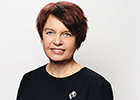
Irja Lutsar
Profiileerimine Eesti 200 fraktsioonAI kokkuvõte
Irja Lutsar märkis, et järgmine konflikt ei pruugi olla konventsionaalne ja võib toimuda küberruumis, ning ta küsis ülevaadet sellest, kui suur osa kaitsekulutustest suunatakse konventsionaalsele sõjale ja laskemoona ning relvade ostmisele võrreldes küberturvalisuse parandamisega.
Kaitseminister Hanno Pevkur
AI kokkuvõte
Kaitseminister Hanno Pevkur ütles, et hübriidi- ja küberohtude vastu tuleb esikohale seada territooriumi kontroll ning traditsiooniline riigikaitse, ning teha laiapindne koostöö Riigi Infosüsteemi Ameti, küberväejuhatuse, küberkaitseliidu ja erasektoriga, keskendudes küberhügieenile ja teadlikkusele, kuigi kogu 1,34 miljardi eelarve on suhteliselt väike.

Vladimir Arhipov
Profiileerimine Fraktsiooni mittekuuluvad Riigikogu liikmedAI kokkuvõte
Kõneleja küsib kaitseministrilt, kas Eestil peaks olema Soome Mannerheimi liinile sarnane kaitsevöönd, mis aitaks riiki kaitsta kaasaegses sõjas, kus raketid mängivad olulist rolli ja maa peal toimub lahing.
Aseesimees Toomas Kivimägi
AI kokkuvõte
Toomas Kivimägi kutsus Vladimir Arhipovi esinema.
Kaitseminister Hanno Pevkur
AI kokkuvõte
Ettekanne rõhutab, et kaitse tuleb korraldada targalt ja tõhusalt: Balti kaitsevöönd, kriisireserv ja piirikaitse tehakse rahuajal, et kriisi ajal aega ja ressursse kokku hoida, ning ettevalmistused ulatuvad Narva-Jõesuust Suwałki koridorini, kuhu võivad liituda ka Soome ja Poola.

Ando Kiviberg
Profiileerimine Fraktsiooni mittekuuluvad Riigikogu liikmedAI kokkuvõte
See kõne küsib, kas me võime osta kaugel asuvaid vastase sihtmärke mõjutavaid relvi, kuid sõja ajal kehtivad tootjariigi piirangud võivad meid nende ründamisel takistada.
Aseesimees Toomas Kivimägi
AI kokkuvõte
Aseesimees Toomas Kivimägi palus Ando Kivibergi tulla lavale.
Kaitseminister Hanno Pevkur
AI kokkuvõte
Pevtkur ütles, et relvaostud on praktilised ning neid tuleb kasutada meie vajaduste järgi, kuid need peavad toimuma NATO‑ga kokku lepitud reeglite ja regionaalsete kaitseplaanidega kooskõlas ning liitlastega sammu pidades, vastasel juhul võib kaotus tulla kiiresti.
Aseesimees Toomas Kivimägi
AI kokkuvõte
Kõne sisaldab Rene Kokkile suunatud palvet: «Rene Kokk, palun!»
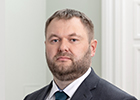
Rene Kokk
Profiileerimine Eesti Konservatiivse Rahvaerakonna fraktsioonAI kokkuvõte
Rene Kokk ütles, et kuigi 2022–2028 on planeeritud 2,3 miljardit eurot laskemoonale soetamiseks ja kaitsevõimekuse parandamiseks, on Eesti kaitsetööstus veel arenev ning laskemoonatootmine puudub, ning ta küsis, milline plaan on selle käivitamiseks Eestis, et tagada võimekus konflikti ajal ning vältida majandusest raha väljaviimist.
Kaitseminister Hanno Pevkur
AI kokkuvõte
Riigikaitseminister Hanno Pevkur ütles, et on koostatud kiire plaan Ämari õhuväebaasi alale laskemoona tootmiseks ning kui konkurs õnnestub, võiks tootmine alata umbes poolaasta jooksul, kuid pikem plaan sõltub keskkonnamõju hindamisest ja eriplaneeringu jõustumisest, ning kui oleks kohe pakkuda 100-hektariline maatükk investori jaoks ja valmisolek tootmisega alustamiseks olemas, on investorid valmis, kuid parlamendi toetus vajalike muudatuste puhul peab arvestama keskkonnahoidu.
Aseesimees Toomas Kivimägi
AI kokkuvõte
See on lihtsalt lühike palve kutsuda Henn Põlluaas kõnelema.
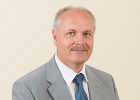
Henn Põlluaas
Profiileerimine Fraktsiooni mittekuuluvad Riigikogu liikmedAI kokkuvõte
Esineja Henn Põlluaas tänab täiendava 1,6 miljardi suuruse laskemoona hankimise eest, kuid küsib, mida sellega täpselt plaanitakse teha, rõhutades, et Eesti suurtükivõime on napp ning meie 155- ja 122-mm torud on praktiliselt ära antud, ning kas on plaan luua tõsiseltvõetav suurtükivõime ning kas see hõlmab ka HIMARS-i ja Caesarite hankimist.
Kaitseminister Hanno Pevkur
AI kokkuvõte
Kaitseminister Hanno Pevkur ütles, et Eestis on tänaseks suurtükivägi oluliselt võimsam kui enne 2022. aasta 24. veebruarit, vanad FH-70-d on asendatud K9-dega, sel aastal lisandub kuus Caesarit ja järgmisel aastal on kohal ülejäänud K9-d, kogu K9-park kasvab 36‑ni, meil on HIMARS-id ning nende laskemoon sisaldab nii lühema kui pikema laskeulatusega M31- ja M57‑rakette (ATACMS), ning veel tuleb palju uut võimekust sel aastal ning järgmisel ja ülejärgmisel aastal.
Aseesimees Toomas Kivimägi
AI kokkuvõte
Aseesimees palub Helir-Valdor Seederil võtta sõna.
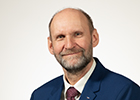
Helir-Valdor Seeder
Profiileerimine Isamaa fraktsioonAI kokkuvõte
Seeder küsib, miks Eesti ei ole taotlenud NATO kiirendatud võimearendust, rõhutab Kaitseliidu kiire liikmeskonna kasvu ja ametikohtade kärpeid ning kutsub valitsust ja kaitseministrit pakkuma lahendusi, mis kompenseeriksid väljaõppejõudude puudust ja tagaksid, et ei arendataks kahurilihja, vaid sõdureid.
Kaitseminister Hanno Pevkur
AI kokkuvõte
Kaitseminister Hanno Pevkur kinnitas, et kaitsekulutuste osakaal on 3,4% SKP-st ning 2021. aasta juhataja nõutud võimed on täna juba realiseeritud, ning ta rõhutas Kaitseliidu väljaõppe ja 20 000-liikmelise koosseisu suurendamist ning tsentraalse ostu ja püsiva rahastuse suurendamise vajadust.
Aseesimees Toomas Kivimägi
AI kokkuvõte
Aseesimees Toomas Kivimägi palus Urmas Reinsalu tulla esinema.
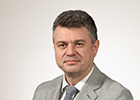
Urmas Reinsalu
Profiileerimine Isamaa fraktsioonAI kokkuvõte
Urmas Reinsalu ütles, et oleks vaja täpsemat selgust täiendava moona rahalise mahu osas, märkides samas, et 2022–2028 moodustuvad ligikaudu 3 miljardit eurot moonahanked, ning 2025–2028 Kaitseministeeriumi arengukavasse on lisatud üks moonahanke summa ning 2022–2024 on moonaostud toimunud nii korralise eelarve kui ka lisaeelarve vahenditest.
Aseesimees Toomas Kivimägi
AI kokkuvõte
Toomas Kivimägi väljendab tänu.

Urmas Reinsalu
Profiileerimine Isamaa fraktsioonAI kokkuvõte
Urmas Reinsalu küsib, kui palju jääb üle kolme miljardist, kui midagi on juba maha võetud.
Aseesimees Toomas Kivimägi
AI kokkuvõte
Aseesimees Toomas Kivimägi väljendab tänu.

Urmas Reinsalu
Profiileerimine Isamaa fraktsioonAI kokkuvõte
Ettekandes käsitleti hanked ajavahemikel 2022–2024 ning 2025–2028.
Kaitseminister Hanno Pevkur
AI kokkuvõte
Kaitseminister Hanno Pevkur ütles, et ta mõistab sinu mõtte ja on valmis sulle vastama.

Urmas Reinsalu
Profiileerimine Isamaa fraktsioonAI kokkuvõte
Urmas Reinsalu kõnes käsitletakse lisasumma kui vahendit lootuse sisustamiseks.
Kaitseminister Hanno Pevkur
AI kokkuvõte
Kaitseminister Hanno Pevkur ütles, et ta mõistab olukorda, kordas eile rahvusringhäälingus sama ja peab praegu kahjuks jääma ebamääraseks ning ei saa täpset summat öelda.
Aseesimees Toomas Kivimägi
AI kokkuvõte
Aseesimees Toomas Kivimägi lubas, et ministrile antakse võimalus vastata.
Kaitseminister Hanno Pevkur
AI kokkuvõte
Kaitseminister Hanno Pevkur alustab, öeldes, et ta räägib tehtud asjadest, ning Urmas Reinsalu jätkab kõnega.
Aseesimees Toomas Kivimägi
AI kokkuvõte
Toomas Kivimägi palub mitte segada ja rõhutab, et läbirääkimised on tulemas.
Kaitseminister Hanno Pevkur
AI kokkuvõte
Kaitseminister Hanno Pevkur ütles, et eelarves on vahendeid umbes 2,3 miljardit ning suurusjärk võib ulatuda umbes 3 miljardini, täpne summa sõltub tarneaegadest ja haigekassa 200 miljoni puudujäägist, ning eelarvekõnelused lõpevad siis, kui eelarve antakse Riigikogule.
Aseesimees Toomas Kivimägi
AI kokkuvõte
Ta tervitab Urmas Reinsalu ja märgib, et tegemist on jälle saatega, kus võib teineteisest üle rääkida.
Kaitseminister Hanno Pevkur
AI kokkuvõte
Hanno Pevkur ütles, et kolme aasta jooksul riigikaitse eelarve jääb umbes 500 miljoni ja miljardi vahele, täpne summa selgub pärast valitsuspartneritega kokkuleppeni ja eelarve lukustamist ning riigikaitseprogramm lõpeb 2028. aasta lõpus.
Aseesimees Toomas Kivimägi
AI kokkuvõte
Aseesimees Toomas Kivimägi kutsus Kalle Grünthali esinema.
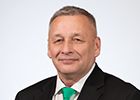
Kalle Grünthal
Profiileerimine Fraktsiooni mittekuuluvad Riigikogu liikmedAI kokkuvõte
Kalle Grünthal pöördub kaitseministri poole ja palub täpset allikat väga tõsise lause kohta, milles öeldi, et sõda võib alata järgmisel aastal, ülejärgmisel või kolme aasta pärast.
Kaitseminister Hanno Pevkur
AI kokkuvõte
Kaitseminister Hanno Pevkur lükkas ümber väidetava lause, mille kohaselt järgmisel või ülejärgmisel aastal algaks sõda, ning kinnitas, et ta ei ole sellist lauset öelnud.
Aseesimees Toomas Kivimägi
AI kokkuvõte
Kõne alguses palutakse Riina Solman ning samal ajal räägib kohapeal Kalle Grünthal.
Kaitseminister Hanno Pevkur
AI kokkuvõte
Kaitseminister Hanno Pevkur kinnitab kõnes kindlalt, et ta ei öelnud lauset, et järgmisel või ülejärgmisel aastal algab sõda, ning palub näidata, kus ta nii ütles.
Aseesimees Toomas Kivimägi
AI kokkuvõte
Toomas Kivimägi tänab ja palub Riina Solmanit.

Riina Solman
Profiileerimine Fraktsiooni mittekuuluvad Riigikogu liikmedAI kokkuvõte
Riina Solman leiab, et kaitsevaldkonna rahastamismudel on kohmakas ja bürokraatlik ning kriisi ajal tuleks raha suunata otse Naiskodukaitsele, et vabatahtlikud saaksid kiiremini koolitada ja kogukondi kaasata.
Kaitseminister Hanno Pevkur
AI kokkuvõte
Kaitseminister Hanno Pevkur rõhutas, et ta ei taha bürokraatiat, soovib selgust rahade liikumises Kaitseministeeriumi, Päästeameti ja Kaitseliidu vahel ning kiitis Naiskodukaitse tublust ning lubas vajadusel protsesse lihtsustada.
Aseesimees Toomas Kivimägi
AI kokkuvõte
Aseesimees Toomas Kivimägi kutsus Leo Kunnase kõnelema.

Leo Kunnas
Profiileerimine Fraktsiooni mittekuuluvad Riigikogu liikmedAI kokkuvõte
Leo Kunnas pidas kõnes kokkuvõtte tegevväelaste arvust aastate lõikes, tuues välja 2020–2022 langenud arvu, 2023 tõusu ja 2024 kavandatava taseme taastumise ning kriitilise hinnangu Kaitseressursside Ameti personali konsolideerimisele väljaspool kaitseväge, mida ta peab NATO-riikides ebaharilikuks.
Aseesimees Toomas Kivimägi
AI kokkuvõte
Ta tänas publikut.

Leo Kunnas
Profiileerimine Fraktsiooni mittekuuluvad Riigikogu liikmedAI kokkuvõte
Ta rõhutab, et niisugune juhtimisviis ei tööta ning tuleb mõista probleemide omavahelist seost ning leida lahendusi, mille tulemusel numbrid tõesti kasvaksid.
Kaitseminister Hanno Pevkur
AI kokkuvõte
Pevkur ütles, et konsolideerimine ei põhjustanud lahkumisi tegevväelusest ning osa ülesannetest anti üle tsiviilteenistustele, kuid uute võimete – meremiinide, laevatõrjeraketite, keskmaa õhutõrje ja HIMARS‑i – tõttu tuleb tegevväelaste arvu siiski suurendada, Kaitseressursside Ameti efektiivsust hinnatakse regulaarselt ning rahulolu teenuse kvaliteediga on paranenud.

Kalev Stoicescu
Profiileerimine Fraktsiooni mittekuuluvad Riigikogu liikmedAI kokkuvõte
Kalev Stoicescu rõhutab, et kaitsetahe on riigikaitse laiem vereringe ning inimeste motivatsioon, mitte relvasüsteemid, märkides põlvkondade vahetumist ja muutuvate hoiakute loomulikku kulgu ning küsib, kuidas tulevased arengukavad ja visioonid arvestavad töö- ja teenistuskultuuri arendamist 2035. aastaks.
Aseesimees Toomas Kivimägi
AI kokkuvõte
Aseesimees Toomas Kivimägi palub Kalev Stoicescut lavale tulla.
Kaitseminister Hanno Pevkur
AI kokkuvõte
Kaitseminister Hanno Pevkur ütles, et vananeva ohvitserkonna ja teenistusest lahkunute tõttu on vaja teenistusaega pikendada, leida motiveerivaid lahendusi ning vajadusel tagasi värvata, samal ajal suurendades tegevteenistujate arvu ja kvaliteeti ning andes akadeemiale rolli noorte jõudmise suunamisel, et ajateenistuse käigus noored suunata Balti Kaitsekolledžisse või välismaale õppima ning toota ohvitsere ja allohvitseride järelkasvu, mida Kaitseressursside Amet peab jälgima.
Aseesimees Toomas Kivimägi
AI kokkuvõte
Aseesimees Toomas Kivimägi kutsub Andres Metsoja esinema.
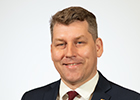
Andres Metsoja
Profiileerimine Isamaa fraktsioonAI kokkuvõte
Metsoja väljendab muret Pärnumaa julgeoleku ja siseturvalisuse pärast seoses Pärnu pataljoni ja politsei- ja piirivalvekolledži sulgemisega, rõhutab Pärnu rolli evakuatsiooni ja tagalateenistuse kontekstis ning küsib lühidalt kaitsetööstuse arendamise ja väljaõppevõimaluste kohta, märkides samal ajal, et Pärnakad ootavad pataljoni tagasi.
Kaitseminister Hanno Pevkur
AI kokkuvõte
Kaitseminister Hanno Pevkur ütles, et Pärnus asuva umbes 36-hektarilise ala kasutamist riigikaitse eesmärkidel kaalutakse: kiireim lahendus oleks Kaitseliidule lähivõitlusala (või lasketiir), arutatakse ka kaitsetööstusettevõtte suunamist ning pärast Kaitseväe juhataja hinnangu saamist plaanitakse Pärnu linna juhtidega kohtuda, et ala paremini ära kasutada, kuigi mõningaid teemasid ei avalikustata.
Aseesimees Toomas Kivimägi
AI kokkuvõte
Aseesimees Toomas Kivimägi kutsub Madis Timpsoni üles.
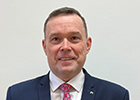
Madis Timpson
Profiileerimine Fraktsiooni mittekuuluvad Riigikogu liikmedAI kokkuvõte
Madis Timpson tänab ettekande eest, kiidab selle selgust ning muljetavaldavaid numbreid ja küsib, kui palju kodumaine kaitsetööstus plaanide jõustumisel loob uusi, kõrgepalgalisi töökohti.
Kaitseminister Hanno Pevkur
AI kokkuvõte
Kaitseminister Hanno Pevkur ütles, et Eesti kaitsetööstuse investeeringute potentsiaal võib ulatuda miljardini eurodes, kus suurkaliibrilise moona ja lõhkeaine tootmine on ressursimahukas, kuid droonide, luureseadmete ja droonivastaste relvasüsteemide tootmises võivad suuremad lepingud suurendada töökohtade arvu sadadesse sõltuvalt ettevõttest.
Aseesimees Toomas Kivimägi
AI kokkuvõte
Aseesimees Toomas Kivimägi kutsub Siim Pohlaku kõnelema.

Siim Pohlak
Profiileerimine Eesti Konservatiivse Rahvaerakonna fraktsioonAI kokkuvõte
Siim Pohlak tõi välja Reformierakonna varase soovi Venemaaga viisavabadust kehtestada ning Läti drooniintsidendi tuules küsis, millised on Eesti võimed ja võimalused ootamatute ja kutsumata objektide tuvastamiseks ning nendele reageerimiseks.
Kaitseminister Hanno Pevkur
AI kokkuvõte
Ettekanne rõhutab, et õhuväes tuleb esmalt objekti tuvastada enne mistahes sekkumist, Eesti ei ole sõjaolukorras ja üksused ei ole lahinguvalmiduses, kuid Läti juhtumist ning NATO reeglite kontekstis vaadatakse, kas protseduuride muudatused on vajalikud ning mida taolaste intsidentide korral teha.
Aseesimees Toomas Kivimägi
AI kokkuvõte
Martin Helme kutsutakse lavale.

Martin Helme
Profiileerimine Eesti Konservatiivse Rahvaerakonna fraktsioonAI kokkuvõte
Martin Helme süüdistab vastajat desinformatsioonis ja rõhutab, et enne Ukraina sõda oli Eestis 84 suurtükiväe- ehk kaartulevõimekust, kuid tänane number ei ole taastunud ning osa süsteemidest, sealhulgas HIMARS-id, on liitlaste omad, mistõttu on vaja täpset jaotust, kui palju on Eesti enda ja kui palju liitlastel.
Kaitseminister Hanno Pevkur
AI kokkuvõte
Kaitseminister selgitas, et erinevate relvasüsteemide võimekusi ei saa otstarbekalt võrrelda, ning Eesti plaanib järgmistel aastatel saada 36 K9-d, 12 Caesarit ja HIMARS-id liitlaste üksustega, mis suurendab meie kogu tulejõudu oluliselt.
Aseesimees Arvo Aller
AI kokkuvõte
Aseesimees Arvo Aller palus Andrus Seeme'i kõnelema.
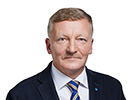
Andrus Seeme
Profiileerimine Eesti Reformierakonna fraktsioonAI kokkuvõte
Andrus Seeme tänas ettekande eest ning esitas üldise küsimuse, kas pikaajaline arengustrateegia Eesti 2035 loob piisavalt kindlaid võimalusi julgeoleku ja kaitsevõime arendamiseks.
Kaitseminister Hanno Pevkur
AI kokkuvõte
Arengukavad annavad riigikaitsele raami ja laia ülevaate ning võimaldavad protsessi ajas jälgida, sealhulgas 66% valmisolekust kaitsetegevuses sihut, mis peab taset hoidma või parandama alates 2020. aasta 58% tasemest, ning lisaks on vaja pikaajalist vaadet – kümneaastane riigikaitse arengukava ning kahekümneaastased NATO eesmärgid – et riigikaitset planeerida realistlikult.
Aseesimees Arvo Aller
AI kokkuvõte
Kõne keskendus Anti Poolametsa nime mainimisele.
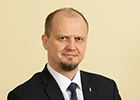
Anti Poolamets
Profiileerimine Eesti Konservatiivse Rahvaerakonna fraktsioonAI kokkuvõte
Anti Poolamets rõhutab, et Eesti droonindus on olemas, kuid areng on ebapiisav ning vajab märkimisväärseid lisapingutusi ja tellimuste kaudu kodumaiste droonitööstuse edendamist, et valdkond kiiremini kasvaks ja noored saaksid robootikaringides sellest paremini aru.
Kaitseminister Hanno Pevkur
AI kokkuvõte
Kaitseminister Hanno Pevkur tõi esile kaks põhipunkti: kiire abi Ukrainale ning droonitootjatega lepingute sõlmimise suuremas mahus kriisideks, mitte suurte varude lattu ostmise arvelt, kuigi väike varu on planeeritud; ja teisalt droonide haavatavus elektroonilises sõjapidamises, mille tõttu sõlmiti Helsingiga strateegiline partnerlus maailma suurima tehisaruettevõttega, kes loob Eestisse teadus- ja arenduskeskuse ning aitab drooninduses AI-d kasutusele võtta ning vastu seista GPS-jammingu ja spoofingu ohule.
Aseesimees Arvo Aller
AI kokkuvõte
Aseesimees Arvo Aller kutsus Rain Eplerit kõnelema.
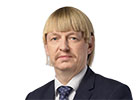
Rain Epler
Profiileerimine Fraktsiooni mittekuuluvad Riigikogu liikmedAI kokkuvõte
Rain Epler küsib, kuidas droonide kiire ja suuremahulise tootmise vajaduse korral tagatakse majanduslik valmisolek ja kas lepingu alusel makstakse lihtsalt valmisoleku tasu või kuidas see mehhanism täpsemalt toimib.
Kaitseminister Hanno Pevkur
AI kokkuvõte
Kaitseminister Hanno Pevkur ütles, et droone ostetakse treeninguks ning teatud varu hoitakse, kuid droonid vananevad kiiresti, mistõttu tuleb leida paindlike ostuvõimalusi—nt valmisoleku tasu või väikse mahuga pikaajalised lepingud—ning kasutada kiiret eskaleerimist tööstuses, sest Ukraina sõja õppetunnid näitavad, et droonide tootmine saab kiiresti suurendada 3D-printerite ja muude võimaluste abil.
Aseesimees Arvo Aller
AI kokkuvõte
Ministrile rohkem küsimusi ei ole; avan läbirääkimised ja fraktsioonide esindajad saavad sõna, esimesena Isamaa fraktsiooni esindaja Urmas Reinsalu palub kolm minutit lisaaega.

Urmas Reinsalu
Profiileerimine Isamaa fraktsioonAI kokkuvõte
Urmas Reinsalu ütles, et Eesti riigikaitse jaoks on hädavajalik täita Kaitseväe juhataja nõuanne ja soetada kriitiline kaugmaamoona 1,6 miljardi euro eest, saavutada erakondade lõikes konsensus ning kasutada vajadusel CO2 emissiooni kaubanduse tulu ja Euroopa Liidu fondide vahendeid, et see rahastus kohe realiseerida.
Aseesimees Arvo Aller
AI kokkuvõte
Kõne keskmes on lihtne sõnum: «Aeg!», mis märgib, et on aeg tegutseda.

Urmas Reinsalu
Profiileerimine Isamaa fraktsioonAI kokkuvõte
Urmas Reinsalu väljendas lootust ja valmisolekut otsida ühisosa kriitilise probleemi lahendamiseks.
Aseesimees Arvo Aller
AI kokkuvõte
Järgmisena esindab Raimond Kaljulaid Sotsiaaldemokraatliku Erakonna fraktsiooni nimel.

Raimond Kaljulaid
Profiileerimine Sotsiaaldemokraatliku Erakonna fraktsioonAI kokkuvõte
Raimond Kaljulaid palub istungi juhatajale kolm minutit lisaaega, märkides, et ehk see pole vaja, kuid võib-olla läheb vaja.
Aseesimees Arvo Aller
AI kokkuvõte
Aseesimees Arvo Aller lubab anda veel kolm minutit.

Raimond Kaljulaid
Profiileerimine Sotsiaaldemokraatliku Erakonna fraktsioonAI kokkuvõte
Raimond Kaljulaid rõhutab, et Venemaa oht nõuab Eesti kaitsekulutuste püsivat suurendamist 4–5% SKP-st ning õiglast koorma jagamist nii NATO riikide vahel kui Eesti sees, samal ajal parandades Riigikogu–valitsuse koostööd ja välis- ning julgeolekupoliitika sünkroniseerimist, sest 2% ei ole enam piisav ning Venemaa retoorika ja eesmärgid ohustavad Läänt ja Eestit.
Aseesimees Arvo Aller
AI kokkuvõte
Järgmisena tuleb Vladimir Arhipov Keskerakonna fraktsioonist.

Vladimir Arhipov
Profiileerimine Fraktsiooni mittekuuluvad Riigikogu liikmedAI kokkuvõte
Arhipov rõhutas, et Eesti 2035 strateegia edukaks elluviimiseks on vaja põhjalikku analüüsi kaitsekulutuste optimeerimiseks ja tõhusamaks kasutamiseks, NATO-ga liitlassuhete tugevdamist ning kaitse 2% SKP-st saavutamist, avaliku arvamuse ja majandusliku heaolu arvestamist, tsiviilkaitse tähtsuse kasvatamist ning noorte teadlikkuse ja valmisoleku suurendamist, samas vältides elanikkonna hirmutamist ja signaalide jagunemist.
Aseesimees Arvo Aller
AI kokkuvõte
Kõne sisuks on küsimus, kas soovite veel aega.

Vladimir Arhipov
Profiileerimine Fraktsiooni mittekuuluvad Riigikogu liikmedAI kokkuvõte
Vladimir Arhipov kinnitab, et kõne kestab kolm minutit.
Aseesimees Arvo Aller
AI kokkuvõte
Aseesimees Arvo Aller tegi ettepaneku anda kolm minutit lisaega.

Vladimir Arhipov
Profiileerimine Fraktsiooni mittekuuluvad Riigikogu liikmedAI kokkuvõte
Vladimir Arhipovi sõnavõtus rõhutatakse, et tsiviilkaitse on riigikaitse lahutamatu osa ning Eesti peab arendama vajalikku infrastruktuuri, suurendama elanikkonna teadlikkust ja valmisolekut ning korraldama rohkem õppusi ja koostööd liitlastega, et kriiside korral tagada riigi toimimine ja elanike turvalisus, ning samal ajal tõstab ta esile, et Riigikogu on Eestis kõige vähem usaldatav institutsioon.
Aseesimees Arvo Aller
AI kokkuvõte
Eesti 200 fraktsiooni nimel palub Kalev Stoicescu kolme minutit lisaaega.

Kalev Stoicescu
Profiileerimine Fraktsiooni mittekuuluvad Riigikogu liikmedAI kokkuvõte
Ettekanne rõhutab laia riigikaitse vajalikkust: kaitse peab hõlmama lisaks sõjalisele kaitsele ka tsiviil- ja digikaitse, riigivarusid ning toidujulgeolekut, ning Eesti peab tugevatele NATO- ja EU-liitlastele tuginedes ning koalitsioonilepete ja julgeolekumaksu abil selle jõupingutusi piisavalt rahastama.
Aseesimees Arvo Aller
AI kokkuvõte
Järgmisena kõneleb Reformierakonna fraktsiooni nimel Mati Raidma ning palub kolm minutit lisaks.

Mati Raidma
Profiileerimine Eesti Reformierakonna fraktsioonAI kokkuvõte
Riigikogu liikmena rõhutab Mati Raidma, et Eesti kindlus ja riigikaitse tuleb tugevdada Ukraina abi ja rahvusvahelise koostöö ning kodumaise kaitsetööstuse arendamise kaudu, ning kiirendada seadusandlust ja suurendada kaitsekulusid, näiteks 400 miljonit eurot järgmiseks neljaks aastaks ja laiapindse riigikaitse edasist arendust.
Aseesimees Arvo Aller
AI kokkuvõte
Järgmisena esindab Martin Helme EKRE fraktsiooni nimel ja palub kolm minutit lisa aega.

Martin Helme
Profiileerimine Eesti Konservatiivse Rahvaerakonna fraktsioonAI kokkuvõte
Martin Helme süüdistab Reformierakonda riigikaitse kahjustamises, väites, et võrreldes 2022. aasta algusega on Eesti kaitsevõime kahanenud, ainus uus võimekus on rannakaitse ning suur osa rahast jõuab maksumaksja süles USA relvatööstuse kasuks, mitte meie endi kaitse tugevdamiseks.
Aseesimees Arvo Aller
AI kokkuvõte
Kõnesoove enam ei ole, läbirääkimised on suletud ja antud päevakorrapunkti menetlemine on lõpetatud.